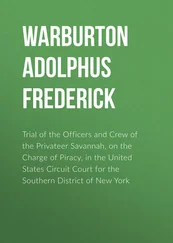However, it is not simply a question of the historicity of Jesus, but what we do and can know about him. Again these questions should be of the utmost importance for all, including Muslims. Muslims believe Jesus existed, therefore, what nearly two hundred years of dedicated and selfless research by some of the greatest historians and intellectuals has revealed about this man should be of passionate interest. Muslims as much as Christians should be concerned with the truth of the matter. Even the Christian theologians who accept Jesus’s existence concede a number of problems concerning his life have not been resolved. Most of the stories in the New Testament concerning his life are now accepted, even by conservative Christian theologians, to be legends with no basis in history. The New Testament scholar Ernst Kasemann concluded: “Over few subjects has there been such a bitter battle among the New Testament scholars of the last two centuries as over the miracle-stories of the Gospels…. We may say that today the battle is over, not perhaps as yet in the arena of church life, but certainly in the ield of theological science. It has ended in the defeat of the concept of miracle which has been tradition in the church.”
Where does this leave the Koran? None of the stories of Jesus in the Koran is accepted as true; most of them contain gross superstitions and “miracles” that only the most credulous would deem worthy of attention. It is worth remarking that if the Koran is absolutely true and the literal word of God, why is it that no Christian theologian adduces it as proof of Jesus’s existence? No historian has ever looked at the Koran for historical enlightenment, for the simple reason that no historian will look at a document, which he will presume to be of human origin, written some six hundred years after the events it purports to describe when there are documents written some fifty or sixty years after the same events. We also know the source of the Koran stories, namely, heretical Gnostic gospels such as the Gospel of St. Thomas, which in turn have been dismissed as unhistorical.
Even if we do not accept the thesis that Jesus never existed, the conclusions of the New Testament historians throw a very illuminating light on the growth of religions and religious mythology; furthermore, they point to the striking similarities to the recent theories put forward by Islamicist scholars on the rise of Islam and the Muhammad legend of the Muslim traditions.
2. Many of the criticisms of Christianity to be found in the works to be discussed apply, mutatis mutandis, to all religions, including Islam.
3. The discussions of the historicity of Jesus have been conducted in Europe and the United States for over a hundred and fifty years now, without any of the scholars who denied Jesus’s historicity being threatened by assassination. It is true Bauer was dismissed from his university post in theology at Bonn in 1842, but he continued to publish until the end of his life. Professor Wells is alive (1994) and well and taught at the University of London until 1971, while still vigorously denying that Jesus ever existed. In all this, there is surely a lesson for the Islamic world.
4. Blind dogmatism has shut Muslims off from the intellectually challenging and exhilarating research, debate, and discussion of the last century and a half. In the words of Joseph Hoffmann: “It is through such discussion, however, that we avoid the dogmatism of the past and learn to respect uncertainty as a mark of enlightenment.”
5. There is also a deeper methodological moral to be learned from the following discussions. The virtue of disinterested historical inquiry is undermined if we bring into it the Muslim or Christian faith. Historical research only leads to an approximation of the objective truth, after a process of conjectures and refutations, critical thought, rational arguments, presentation of evidence, and so on. However, if we bring subjective religious faith, with its dogmatic certainties, into the “historical approximation process, it inevitably undermines what R. G. Collingwood argued was the fundamental attribute of the critical historian, skepticism regarding testimony about the past.”
The Arguments
Strauss
In his Life of Jesus Critically Examined (1835), David Strauss pointed out that we could not take the gospels as historical biographies; that was not their primary function. The early Christians wanted to win converts to their cause “through the propagation of a synthetic religious myth.”
Strauss’s main thesis is that the stories in the New Testament were the result of the messianic expectations of the Jewish people.
The evangelists made Jesus say and do what they expected—from their knowledge of the Old Testament—that the Messiah would say and do; and many passages that in fact make no reference to the Messiah were nevertheless taken as messianic prophecies. Thus, “then shall the eyes of the blind be opened” (Isa. 35) expresses the joy of Jewish exiles in Babylon at the prospect of release from captivity, but was understood by the evangelists as prophesying that the Messiah would cure blindness, which they accordingly make Jesus do.
Bauer
Bauer went a step further and contended that the early Christians fashioned Jesus Christ from the portraits of the prophets found in the Old Testament. Jesus never existed, and Christianity arose in the middle of the first century from a fusion of Judaic and Greco-Roman ideas. Bauer argues, for example, that the Christian use of the Greek term “Logos” ultimately derives from Philo, the Stoics, and Heraclitus. For Philo, the Logos was the creative power that orders the world and the intermediary through whom men knew God. Of course, in St. John’s Gospel, the Logos is equated with God, who becomes incarnate in Jesus Christ.
As for other classical influences on Christianity, as early as the fourth century, anti-Christian writers were pointing out the striking resemblances of the life of Jesus to the life of Apollonius of Tyana, a neo-Pythagorean teacher who was born just before the Christian era. He led a wandering and ascetic life, claimed miraculous powers, and was in constant danger of his life during the reigns of Roman emperors Nero and Domitian. His followers referred to him as the son of God; they also claimed he was resurrected before their very eyes and that he ascended into heaven.
The mystery cult of Mithras was first established in the Roman world in the first half of the first century B.C. This cult developed secret rites and rituals and stages of initiation through which the god’s devotees had to pass. Mithraic mysteries also showed striking similarities to the Christian Baptism and the Eucharist.
The early Christians attribute words and sayings to Jesus that in reality only reflect the experience, convictions, and hopes of the Christian community. For example, Mark 1.14–15: “Now after that John was put in prison, Jesus came into Galilee, preaching the gospel of the kingdom of God. And saying, “The time is fulfilled, and the kingdom of God is at hand: repent ye, and believe the gospel.” Christ never spoke these words,
They were merely an expression of the earliest Christian community’s conviction that the time was ripe for the appearance of Christianity and the diffusion of its beliefs about spiritual salvation. But in time, attempts were made to find historical indications—from the ancient days recorded in the Old Testament to imperial times—that progressive preparations for the age of salvation were apparent. Each new generation has regarded its own time as the time when the ancient promises will be fulfilled. The first Christians believed, from their knowledge of the Old Testament, that before the Savior came Elijah would return to earth. Once they had come to see the historical John the Baptist as Elijah returned, they would naturally believe that the Savior had followed soon after; and eventually a story would be constructed in which this “savior” is made to call John by the name “Elijah.” (Mark 9.13)
Читать дальше












